
what you'll learn...
overview
In this, Comparing two fractions of different place values or denominators is explained. This covers
• comparing like fractions by the value of numerators.
• When comparing numerators, the integer comparison principles / procedures are applied.
• fractions in number line
• ascending and descending order of fractions
compare whole
Let us quickly review comparing whole numbers and set on to understand comparing fractions.
The number is "larger" than the number .
The number is "smaller" than the number .
The number is "equal" to the number .
In whole numbers, we had studied the following.
Trichotomy Property of Comparison : Two numbers can be compared to find one of them as
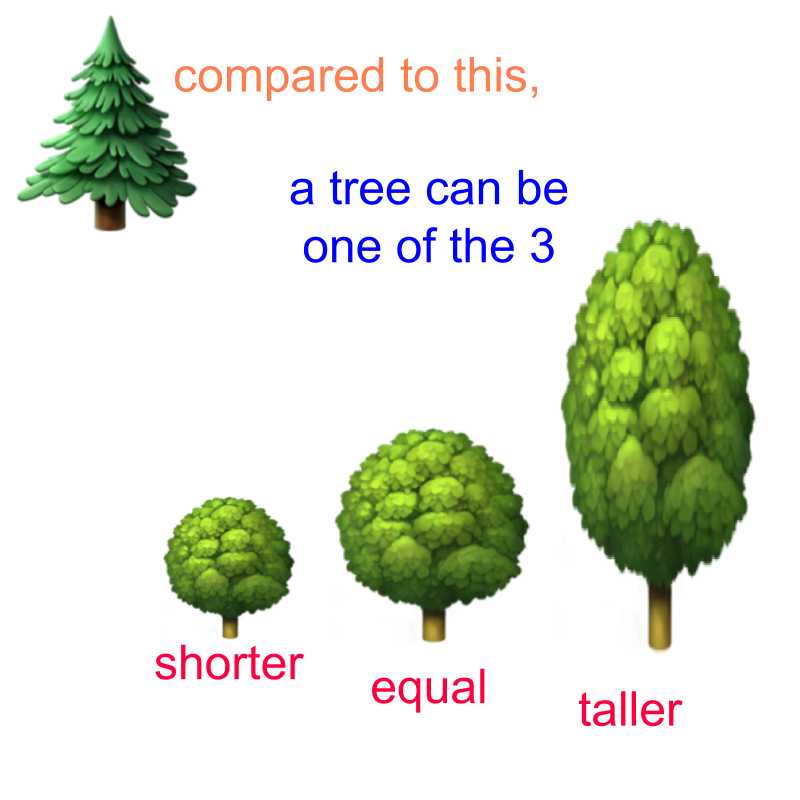
• smaller or less
• equal
• greater or larger
Comparison by First Principle: Two quantities are matched one-to-one and compared in the count or magnitude of the quantities. As a result one of them is smaller or equal to or larger to the other.
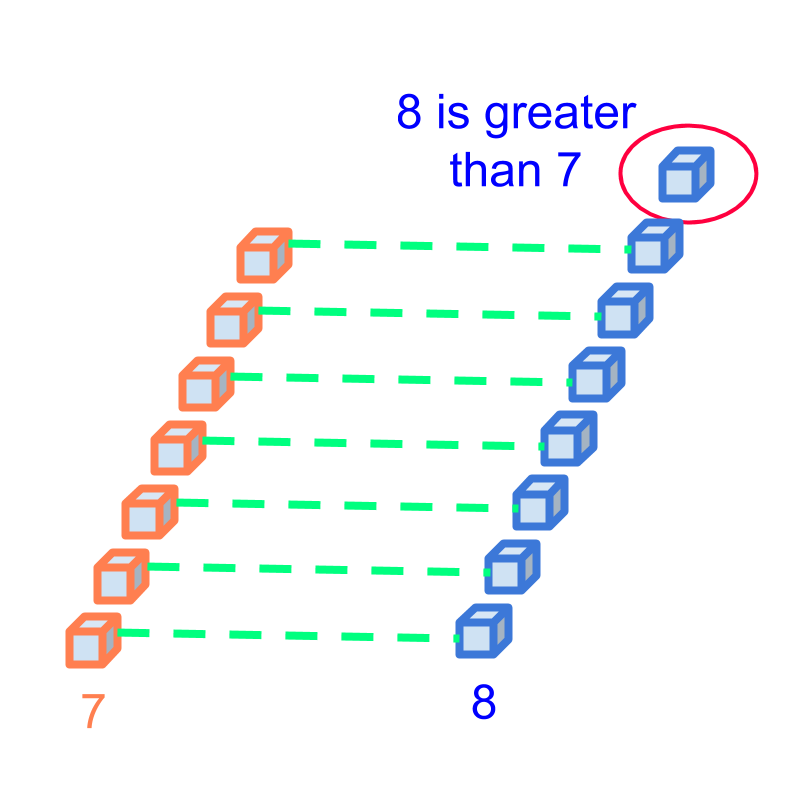 Example: Comparing the numbers and . The quantities represented by them is compared in the figure. It is found that is smaller than .
Example: Comparing the numbers and . The quantities represented by them is compared in the figure. It is found that is smaller than .
Simplified Procedure -- Comparison by ordered-sequence: To find if one numbers is larger or smaller than another number, the numbers are compared using the order .
 Example: Comparing the numbers and .
Example: Comparing the numbers and .
is on the left-side to in the order and so is smaller than .
Comparison by Place-value -- Simplified Procedure to Compare Large Numbers: To find if one number is larger or smaller than another number, the digits at the highest place value are compared and if they are equal, then the digits at next lower place value are compared.
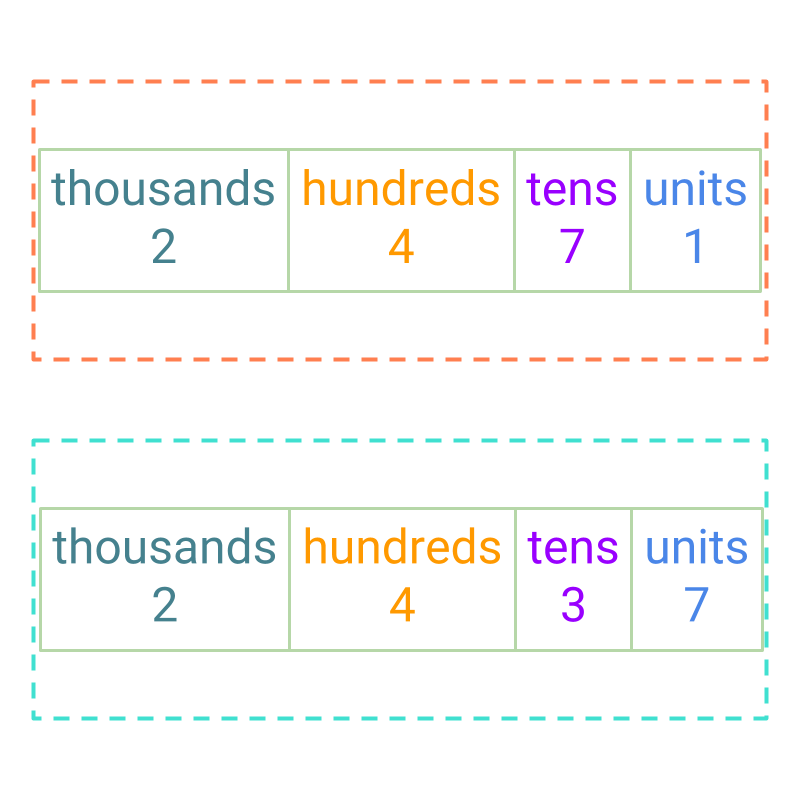
Given two whole numbers, they can be compared as
• greater or larger
• smaller or lesser
• equal.
Can such comparison be done on two fractions?
compare parts

Given two fractions and . The figure shows the fractions. is shown in brown, and is shown in purple color.
Comparing the quantities represented by the fractions, it is concluded that is larger than .
Given two fractions and . A picture to show the quantities is not given. Can these be compared?
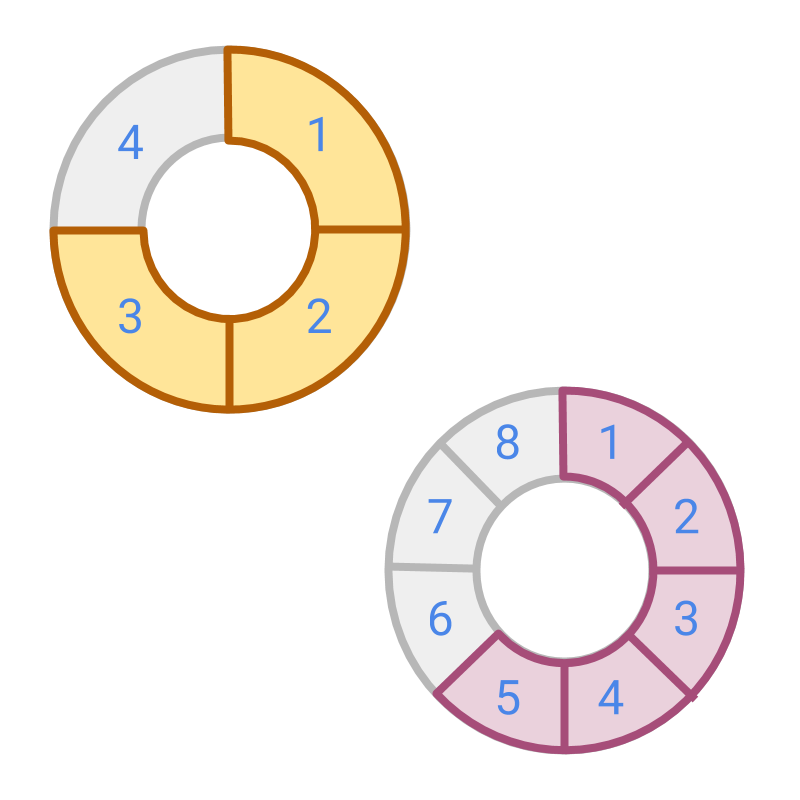
Given two fractions and .
The figure shows the fractions. is shown in brown, and is shown in purple color.
With the figure, it is easy to find that one fraction is larger than another.
To compare these fractions, convert the fractions to like fractions having same place value
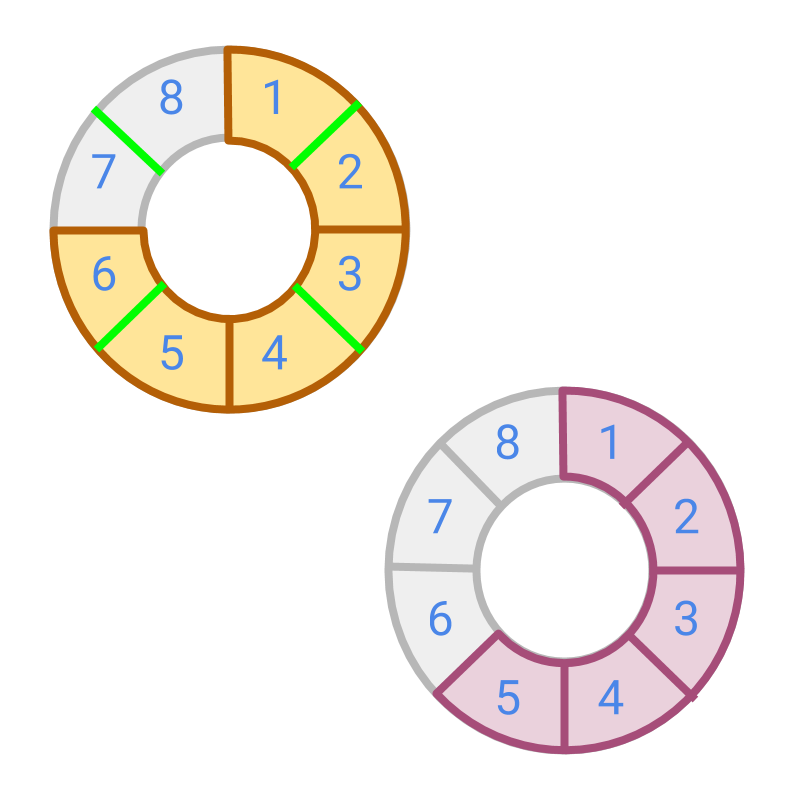
Given two fractions and . The fraction is converted to to make them like fractions.
Both and have the same place value (ie: same denominator ).
In this form, the numerators can be compared and is larger, which means its equivalent fraction is larger than .
Two fractions can be compared by numerators after converting them into like fractions.
In whole numbers, tens and units are compared by converting tens into units. units is larger than units.
In fractions, the denominators represent the place values, and numbers of same place value can be compared. Numerators of like fractions are compared as whole numbers, and unlike fractions are converted to like fractions before the comparison.
Comparing fractions: First principles The numerators of two like fractions can be compared as whole numbers.
Unlike fractions are first converted into like fractions to compare them.
example

Given and , Which fraction is smaller?
The answer is ''. First, convert them to like fractions
Comparing the numerators and , it is concluded that is smaller.
compare directed numbers
So far only positive fractions were considered for comparison. Fractions are directed numbers too. Fractions can be either positive or negative. Let us see how to compare such fractions.
Comparison of Integers -- First Principles: : Comparison is in terms of the amount received (or the aligned direction).
Amount given is smaller than amount received, as comparison is by amount received.
Larger amount given is smaller than smaller amount given, as comparison is by the amount received.
Comparison of Integers -- Simplified Procedure:
sign-property of comparison
• +ve and +ve are compared as whole numbers.
• When comparing +ve and -ve, the +ve value is larger irrespective of the absolute values of the numbers.
• When comparing -ve and -ve, the number with smaller absolute value is larger than the other.
The absolute values are compared as the simplified procedure detailed in whole numbers comparison by place-value.
and are compared. The numbers are, and in directed fractions form. Received, is greater than, given.
Negative fractions are smaller than positive fractions.
Comparing or . The comparison is in terms of received. When comparing in terms of amount received, is larger than .
The same is applicable for fractions. Negative fraction with larger absolute value is smaller than negative fraction with smaller absolute value.
Comparison of Negative and Positive fractions: : Comparison is in terms of the amount received.
Amount given is smaller than amount received, as comparison is by amount received.
Larger amount given is smaller than smaller amount given, as comparison is by the amount received.
Simplified Procedure:
sign-property of comparison
• +ve and +ve are compared as larger absolute value is larger fraction in value.
• When comparing +ve and -ve, the +ve value is larger irrespective of the absolute values of the numbers.
• When comparing -ve and -ve, the number with smaller absolute value is larger than the other.
examples
Which of the following is smaller than the other? or
The answer is "." As per sign property of comparison, the negative number is smaller than the positive number.
Which of the following is smaller than the other? or
The answer is ""
Both the numbers are negative. So, the larger amount in negative is smaller in values. Comparing the numbers without the sign and converting them to like fractions, is larger in value and so is smaller than .
Which of the following is larger than the other? or
The answer is "the numbers are equal"
Which of the following is larger than the other? or
The answer is "". As per sign property of comparison, the positive number is larger than the negative number.
order in parts
In whole numbers, we learned that the ordinal-property of the numbers is defined by `0<1<2<3
In integers, we learned that the ordinal-property of the numbers is extended to .
Let us see how the ordinal property is extended to fractions.
To understand the ordinal property of fractions, let us first consider fractions of same denominator. The ordinal property is readily extended to

The ordinal property is best captured by the number-line.
• Number-line of whole numbers starts from and extends in one direction. It consists of points at positions .
• Number-line of integers extends in both the directions. It consists of points at positions
• Fractions are placed between the integers values. Number-line of fractions extends in both the directions.

Consider the number line of fractions. is placed between points and .
The line-segment between and is split into equal pieces. is at the position of piece as shown in the figure.
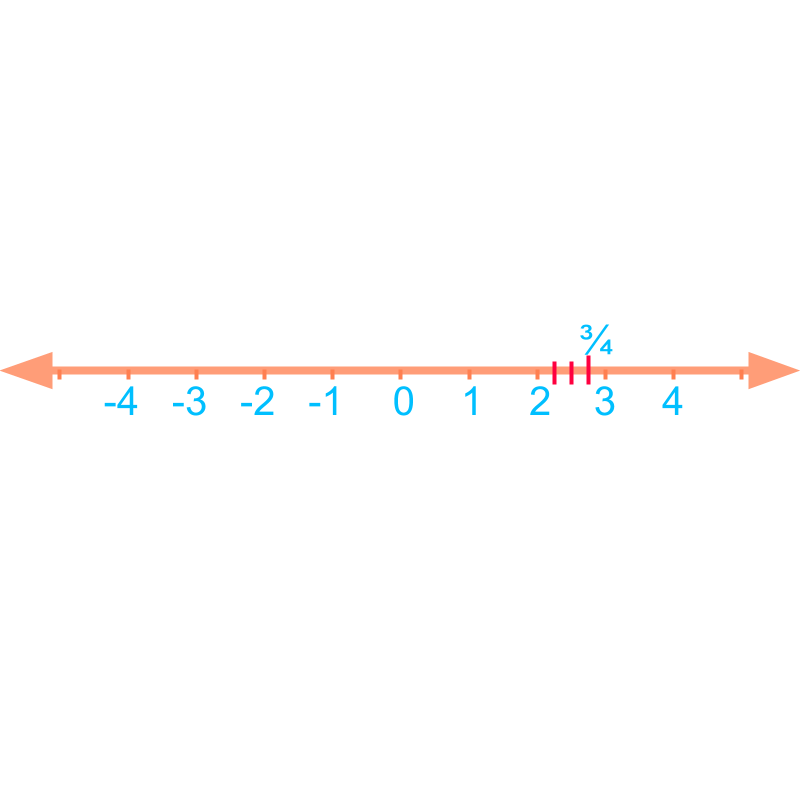
The fraction , is placed between points and at third position of pieces. The line-segment between and is split into equal pieces. is at the position of third piece as shown in the figure.
largest and smallest
Given several fractions, to compare as largest or smallest, the fractions are converted to like fractions.

The ascending order was introduced in whole numbers. Given numbers are arranged from smallest to largest.
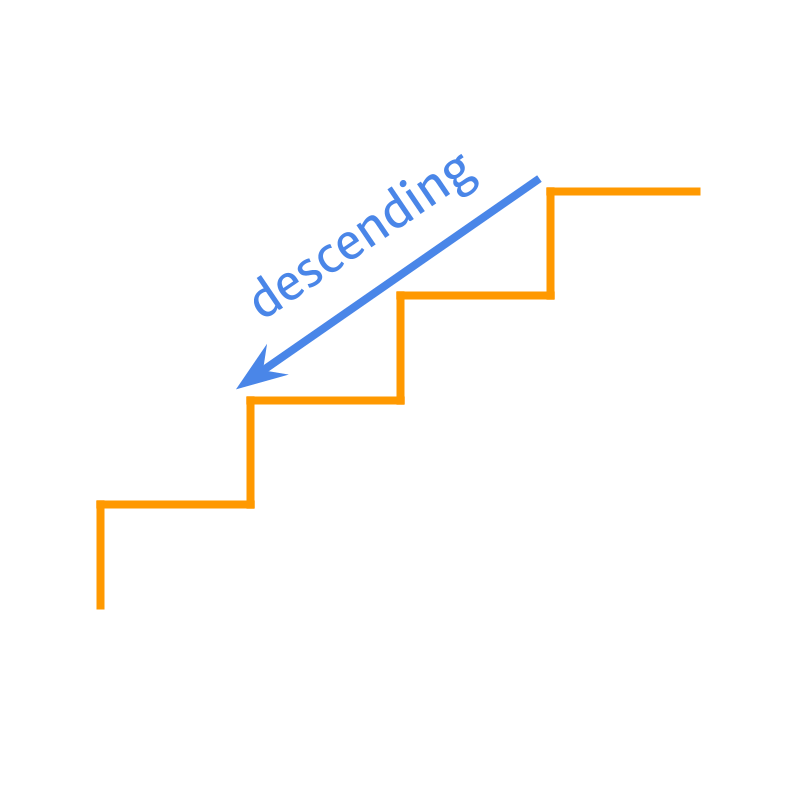
The descending order was introduced in whole numbers. Given numbers are arranged from largest to smallest.
Two or more fractions can be arranged in ascending order or descending order, after converting them to like fractions. The like fractions can be ordered based on the value of the numerators.
Two or more fractions can be compared to arrange them in
• ascending order : from the smallest to the largest
• descending order : from the largest to the smallest
examples
Arrange the numbers in ascending order , , .
The answer is ", , "
Arrange the numbers in descending order , , .
The answer is ", ,"
Arrange the numbers in descending order , , .
The answer is ", , "
summary
» convert the fractions to like fractions and compare the numerators.
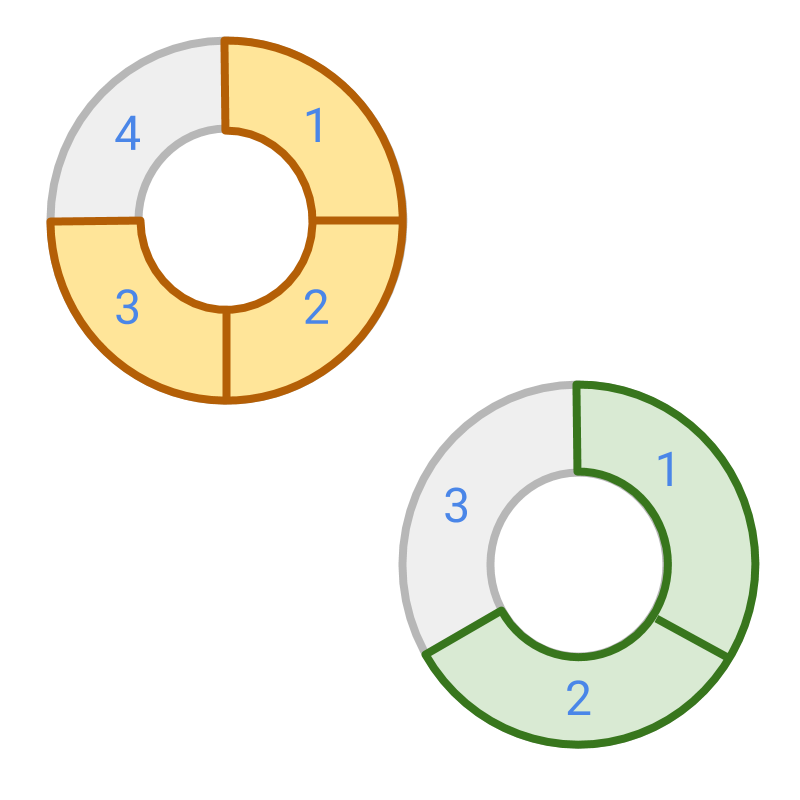 →
→
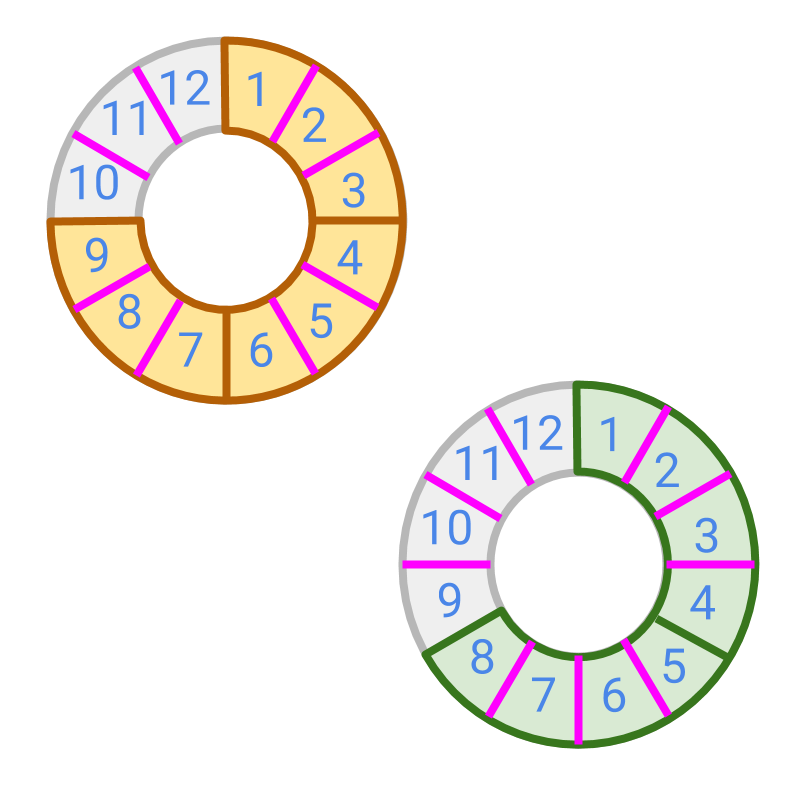 → and
→ and
→
→
In comparing numerators as integers, the following principles / procedures of integer comparion is used.
• Comparison by First Principle
• Simplified Procedure -- Comparison by ordered-sequence
• Comparison by Place-value
• sign-property of comparison
Outline
The outline of material to learn "fractions" is as follows.
• click here for detailed outline of Fractions
→ Part of whole
→ Dividing a group
→ Fractions as Directed numbers
→ Like and Unlike Fractions
→ Proper and Improper Fractions
→ Equivalent & Simplest form
→ Converting unlike and like Fractions
→ Simplest form of a Fraction
→ Comparing Fractions
→ Addition & Subtraction
→ Multiplication
→ Reciprocal
→ Division
→ Numerical Expressions with Fractions
→ PEMA / BOMA